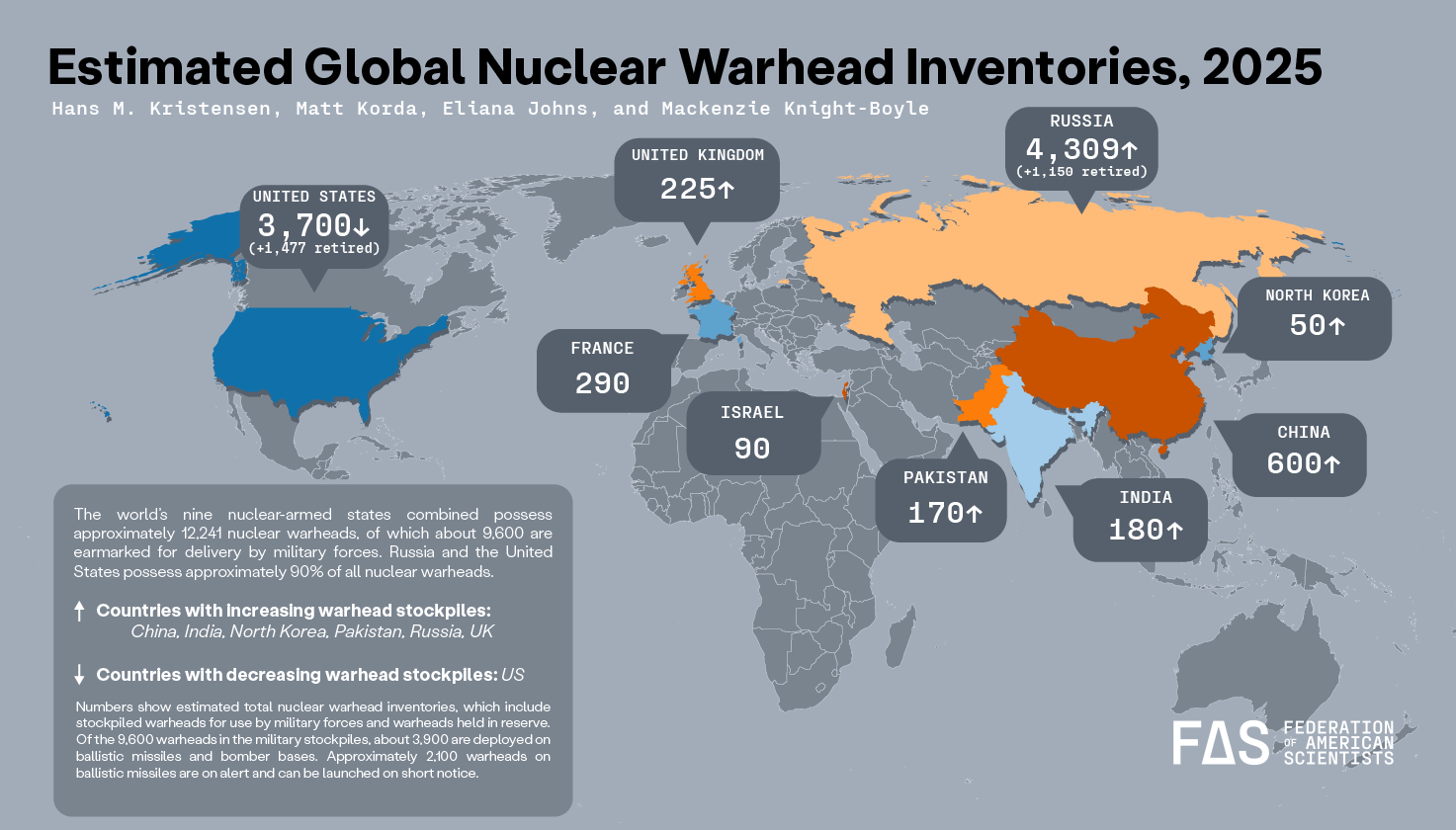Estimated Countries with Nukes Map


Marcus Rodriguez
Historical Geography Expert
Marcus Rodriguez specializes in historical cartography and geographic data analysis. With a background in both history and geography, he brings unique...
Geographic Analysis
What This Map Shows
This map provides a visual representation of countries estimated to possess nuclear weapons, showcasing not only their locations but also the historical and geopolitical context surrounding their nuclear arsenals. Understanding nuclear capability is crucial as it profoundly impacts international relations, security policies, and global stability. The map highlights the nations known to have developed or acquired nuclear weapons, including recognized nuclear states and those suspected of possessing them.
Deep Dive into Nuclear Weapons
Nuclear weapons are powerful explosive devices that derive their destructive force from nuclear reactions, namely fission or fusion. The first successful nuclear weapon test occurred in 1945 during World War II, which marked the beginning of the nuclear age. Since then, several countries have developed their own nuclear arsenals, motivated by national security concerns, geopolitical power dynamics, and deterrence strategies.
As of now, the recognized nuclear-armed states include the United States, Russia, China, France, and the United Kingdom, collectively known as the P5 nations. However, other countries have also emerged with nuclear capabilities. For instance, India and Pakistan both conducted nuclear tests in 1998, solidifying their status as nuclear powers. North Korea has been an increasingly controversial player in this arena, with its ongoing nuclear weapons program raising concerns about regional and global security. Interestingly, Israel is widely believed to possess nuclear weapons, although it maintains a policy of ambiguity and has neither confirmed nor denied its nuclear capabilities.
The implications of nuclear weapons extend beyond mere possession. The doctrine of mutually assured destruction (MAD) has shaped Cold War policies, deterring direct conflict between nuclear powers. However, the proliferation of nuclear weapons to additional countries poses significant risks. The more nations that acquire nuclear capabilities, the higher the likelihood of miscalculations, accidents, or even nuclear terrorism.
In recent years, the Treaty on the Non-Proliferation of Nuclear Weapons (NPT) has played a vital role in curbing the spread of nuclear arms. Established in 1968, the NPT aims to prevent the proliferation of nuclear weapons, promote peaceful uses of nuclear energy, and advance disarmament efforts. Despite its successes, challenges remain, particularly with countries like North Korea, which has withdrawn from the treaty and continues to develop its arsenal.
Regional Analysis
Examining the map reveals a stark contrast in nuclear capabilities across different regions. North America, led by the United States, holds a significant portion of the world’s nuclear arsenal, with an estimated 5,800 nuclear warheads. Russia follows closely with a comparable number, making the United States and Russia the two largest nuclear powers.
In Asia, the situation is more complex. India and Pakistan's nuclear capabilities are rooted in their historical rivalries, particularly over Kashmir. Both countries maintain a policy of deterrence, with nuclear weapons serving as a means to prevent conventional warfare. Interestingly, China, while also a nuclear power, has historically maintained a smaller arsenal, focusing on a no-first-use policy, which differentiates its nuclear strategy from that of the U.S. and Russia.
In the Middle East, Israel's suspected nuclear arsenal has remained a contentious issue. The ambiguity surrounding its nuclear capabilities has implications for regional dynamics, particularly concerning Iran’s nuclear ambitions. Iran's nuclear program has raised alarms in the international community, leading to various diplomatic efforts aimed at curtailing potential nuclear weapons development.
Significance and Impact
The topic of nuclear armament is crucial in understanding global security dynamics today. The existence of nuclear weapons poses existential threats not just to nations but to humanity at large. Moreover, the geopolitical landscape continues to evolve, with emerging powers and rogue states posing new challenges. For instance, the recent tensions between the U.S. and North Korea highlight the precarious balance that nuclear capabilities impose on international relations.
As we look to the future, the trend of nuclear proliferation remains a concern. While some nations are actively pursuing disarmament, others seek to expand their arsenals, leading to a complex global chess game. The interplay between nuclear deterrence and diplomatic negotiations will shape the next chapter in how nations navigate their security policies. The map serves as a reminder of the ongoing need for dialogue, transparency, and international cooperation in addressing the nuclear threat. Have you noticed how discussions about nuclear disarmament are more critical now than ever? The implications of this topic reverberate through politics, security, and diplomacy, making it a pivotal aspect of contemporary geography and international relations.
Visualization Details
- Published
- August 12, 2025
- Views
- 58
Comments
Loading comments...